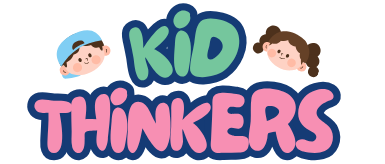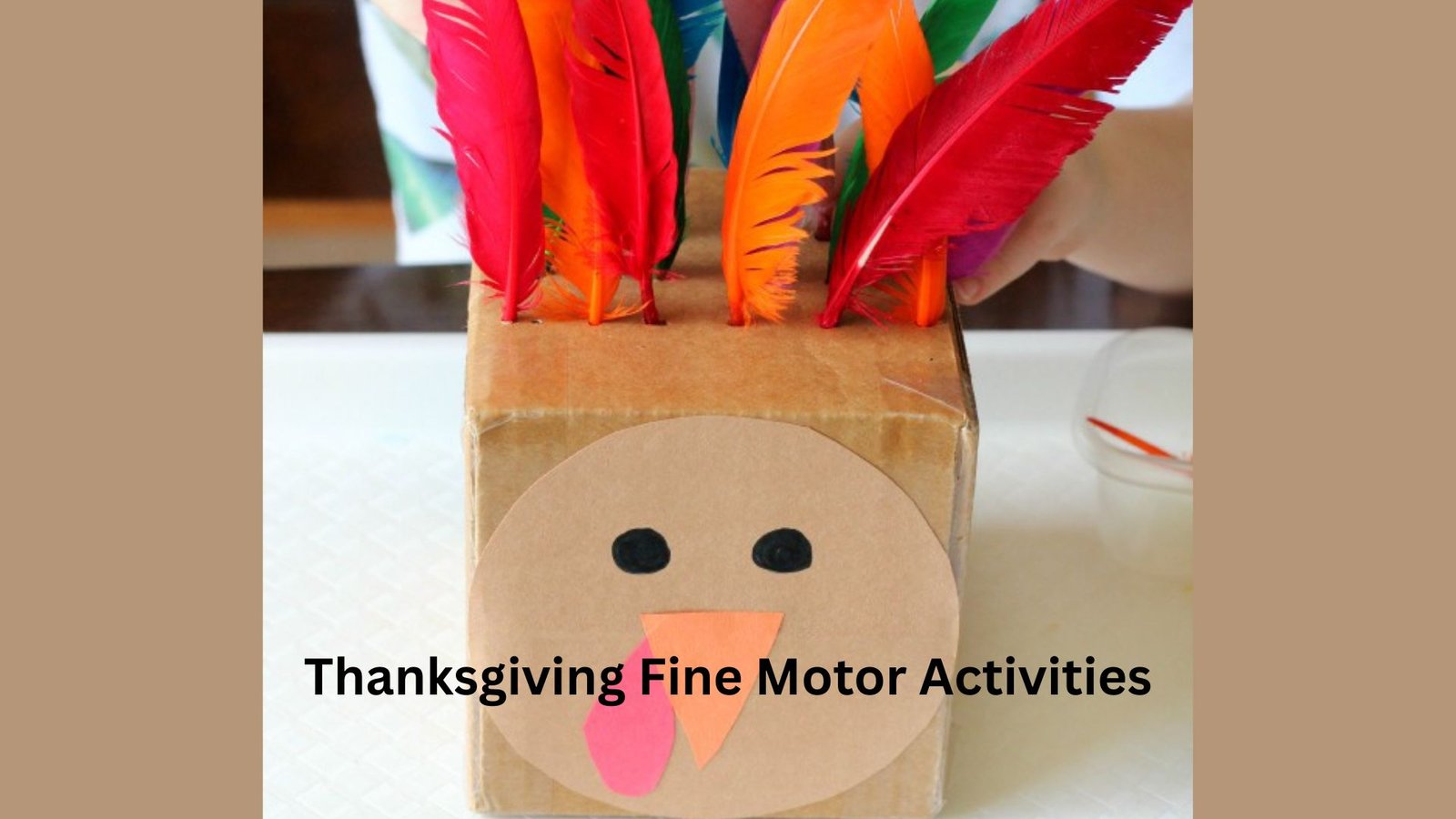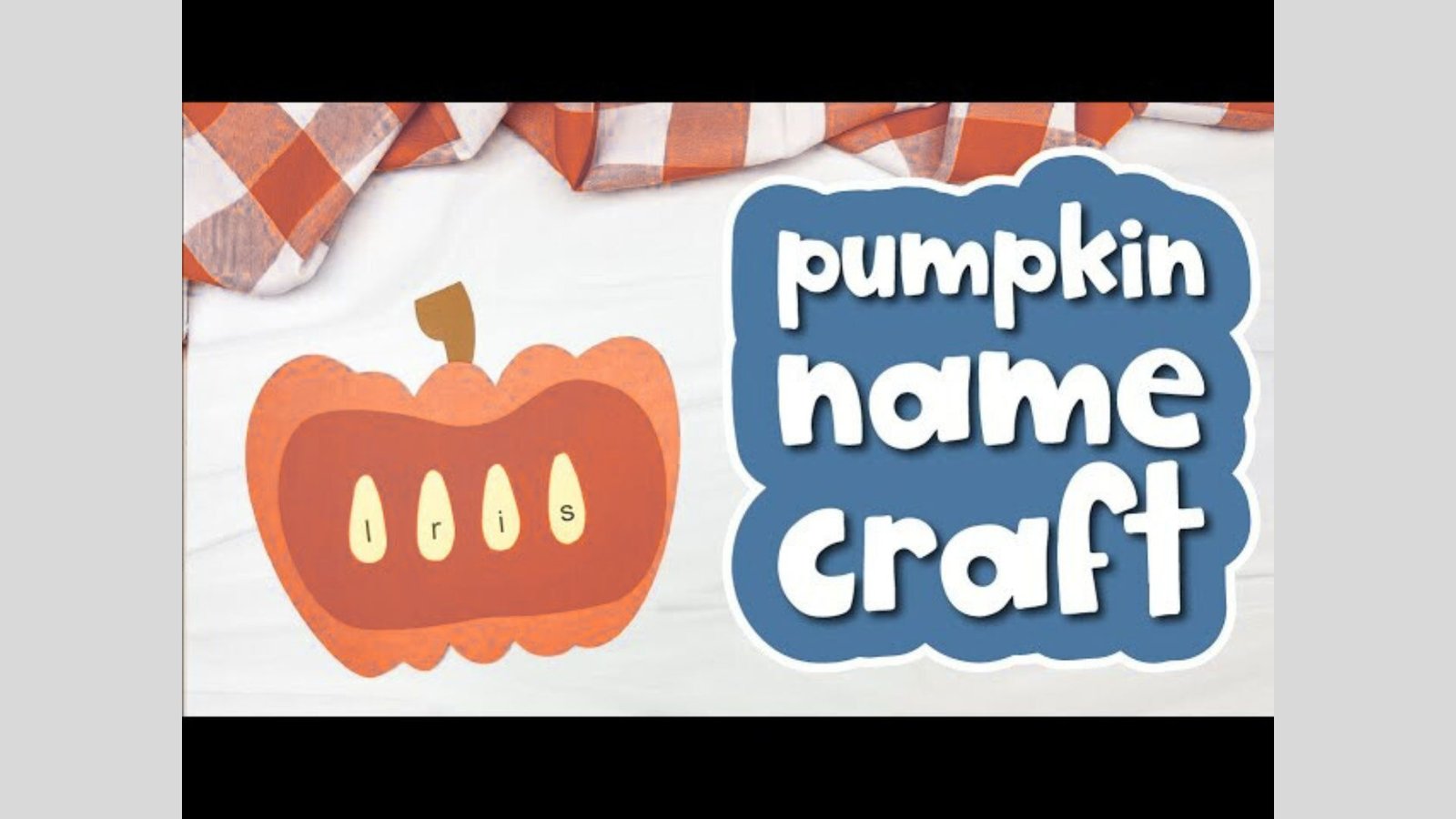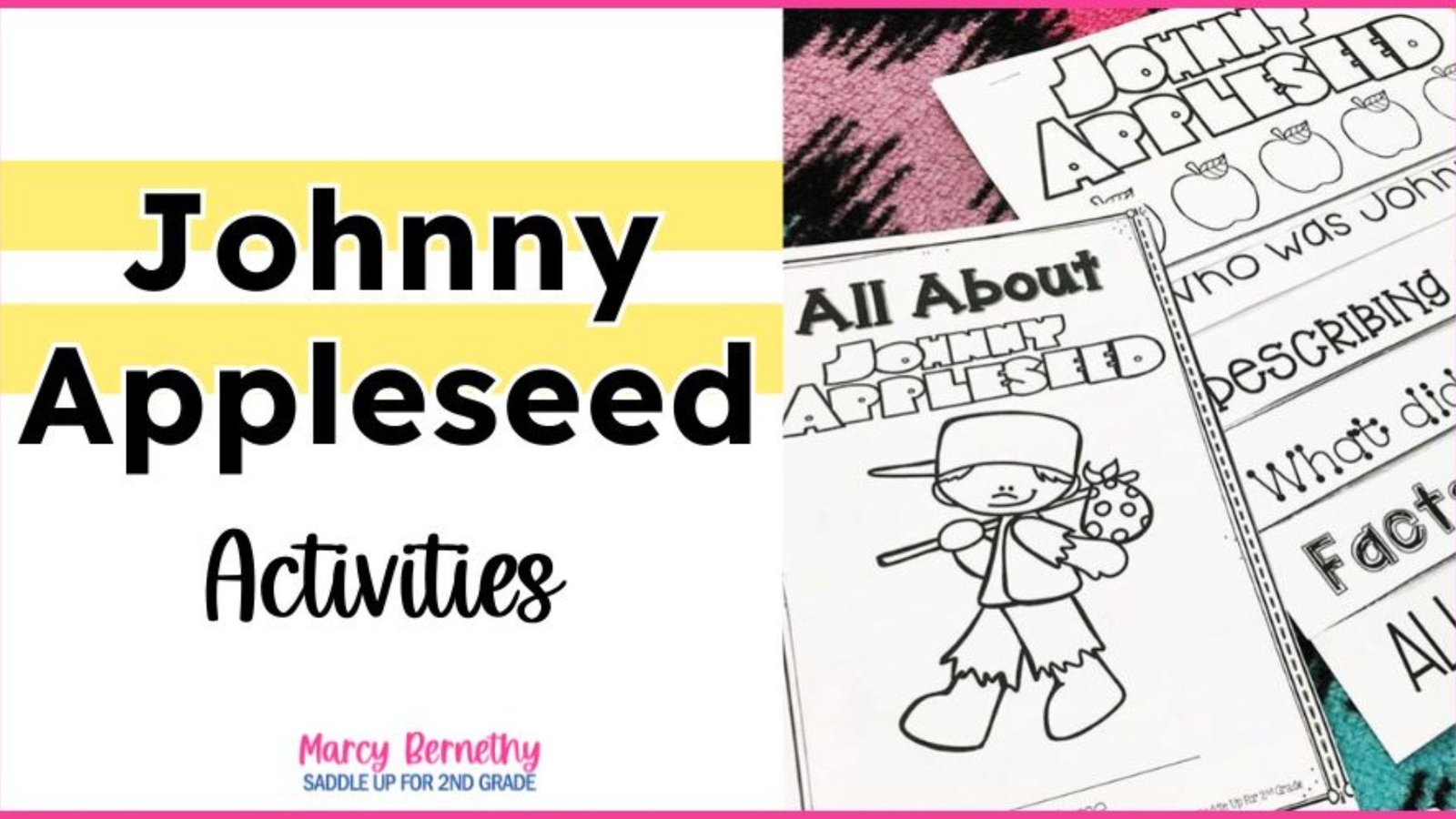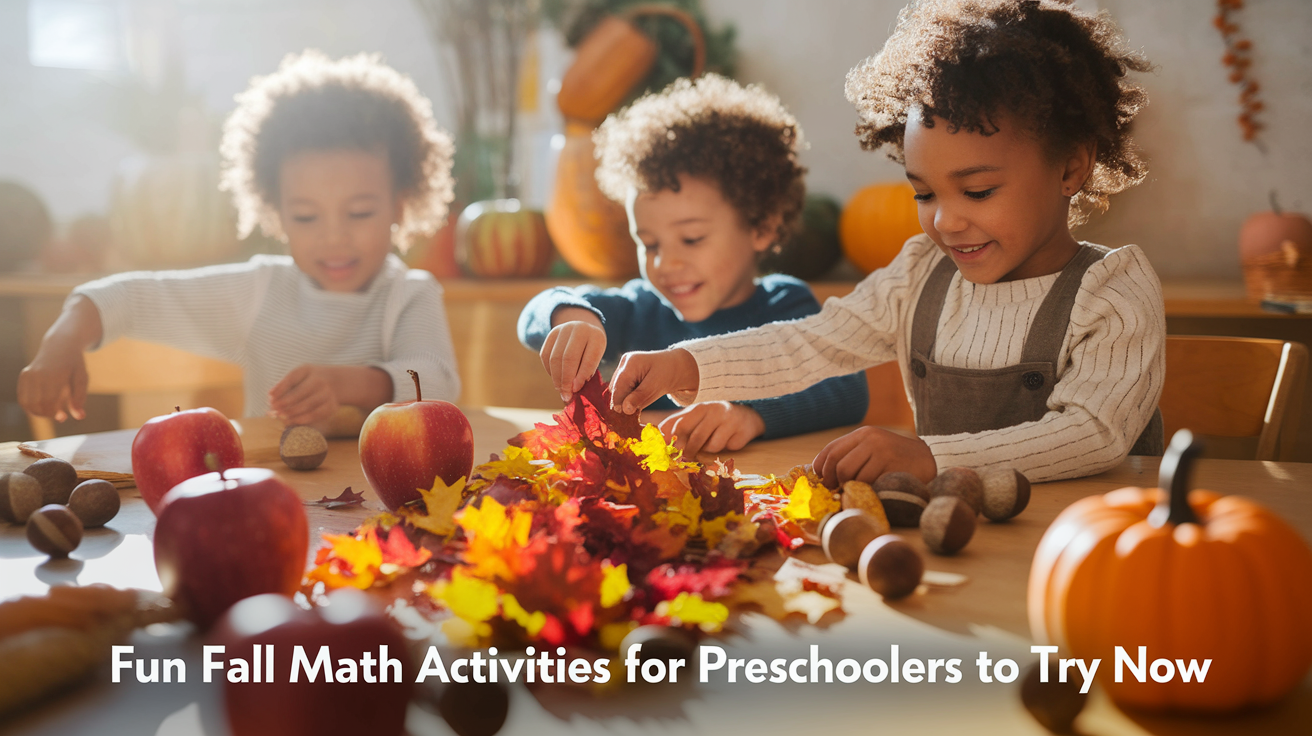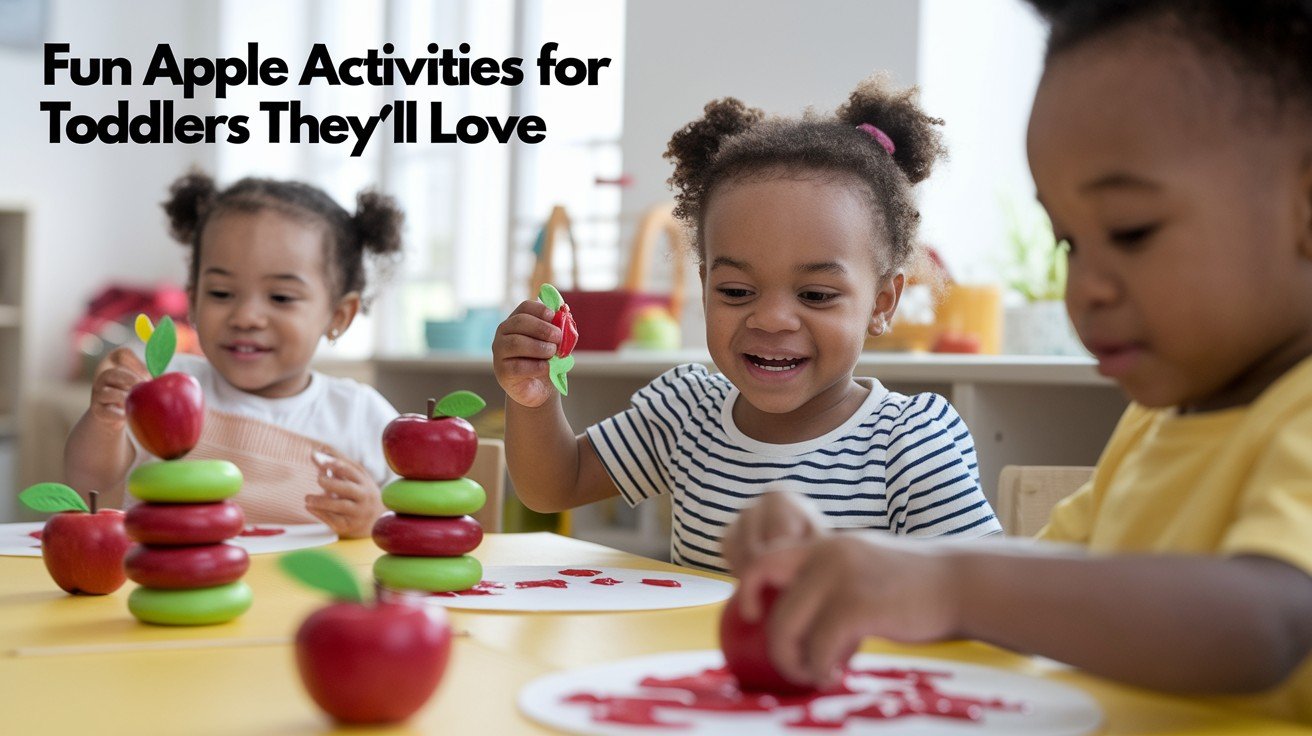Does your preschooler happen to have struggles in regard to holding a crayon or buttoning coats? You’re not alone. Thanksgiving is a festive season and a better time to develop important fine motor skills.
Through these Thanksgiving fine motor activities, common materials may become quite engaging learning opportunities for all. Only items from kitchen drawers and craft bins are needed without costly kits or special supplies whatsoever.
I have spent years working with young children, so I watched them light up when learning felt playful. These 10 activities have been tested within real homes and classrooms. The activities were changed based on what truly helps active families, too.
Thanksgiving Fine Motor Activities Ready to Use Today
These hands-on Thanksgiving fine motor activities require minimal prep and deliver maximum skill-building benefits.
Quick-Prep Activities with Common Materials
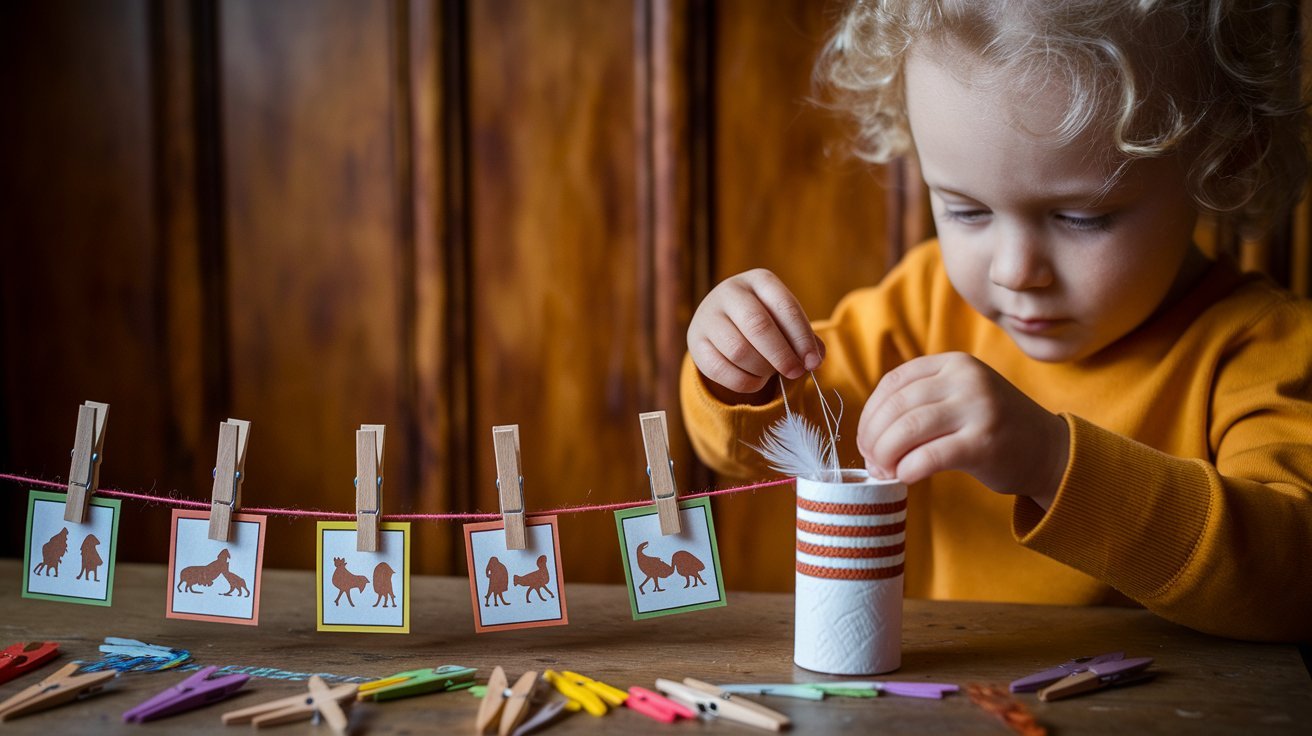
Your kitchen and craft drawer hold everything needed for these four activities. The Now and Then Clothesline uses clothespins clipped to string, with printed images of Thanksgiving past and present.
Feather Threading turns toilet paper tubes into fine motor tools when children thread real or craft feathers through punched holes. These activities build the pincer grasp essential for pencil control.
Start with whichever activity matches the materials you have on hand. Children can complete these independently after a quick demonstration, giving you time to prepare Thanksgiving dinner while they build crucial developmental skills.
Cutting and Scissor Skills Activities
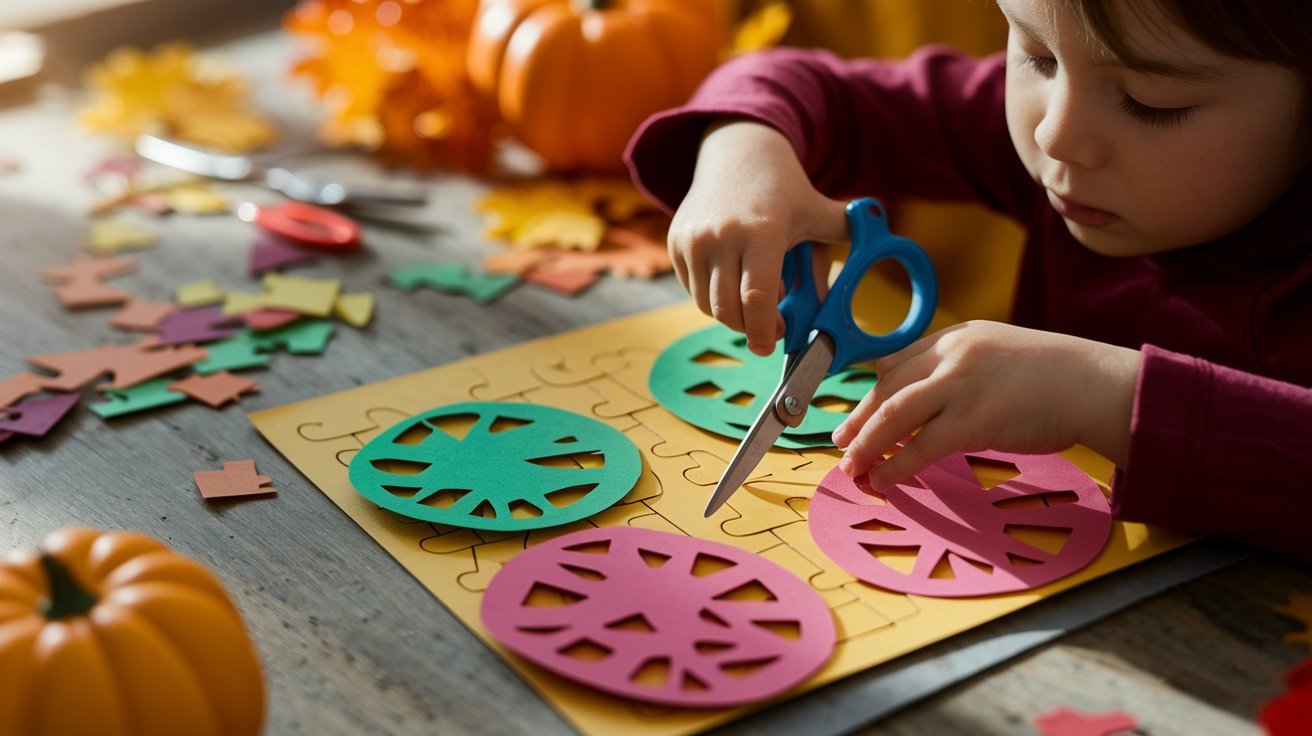
Scissor practice doesn’t have to mean random snipping. Thanksgiving Puzzles come in 2-piece, 3-piece, and 5-piece formats that children cut apart and reassemble. The Set the Table Craft has children cut out printed food items and paste them onto a festive table template.
Turkey in the Grass offers graduated snipping practice. Children cut fringe along green paper to create grass where their turkey stands. This controlled cutting builds the hand strength and coordination needed for more complex shapes later.
I recommend starting with the puzzles for beginners. The thick lines and large pieces build confidence before moving to the detailed food items in the table craft. Keep child-safe scissors; sharp, dull blades make cutting harder and more frustrating.
Creative Fine Motor Projects
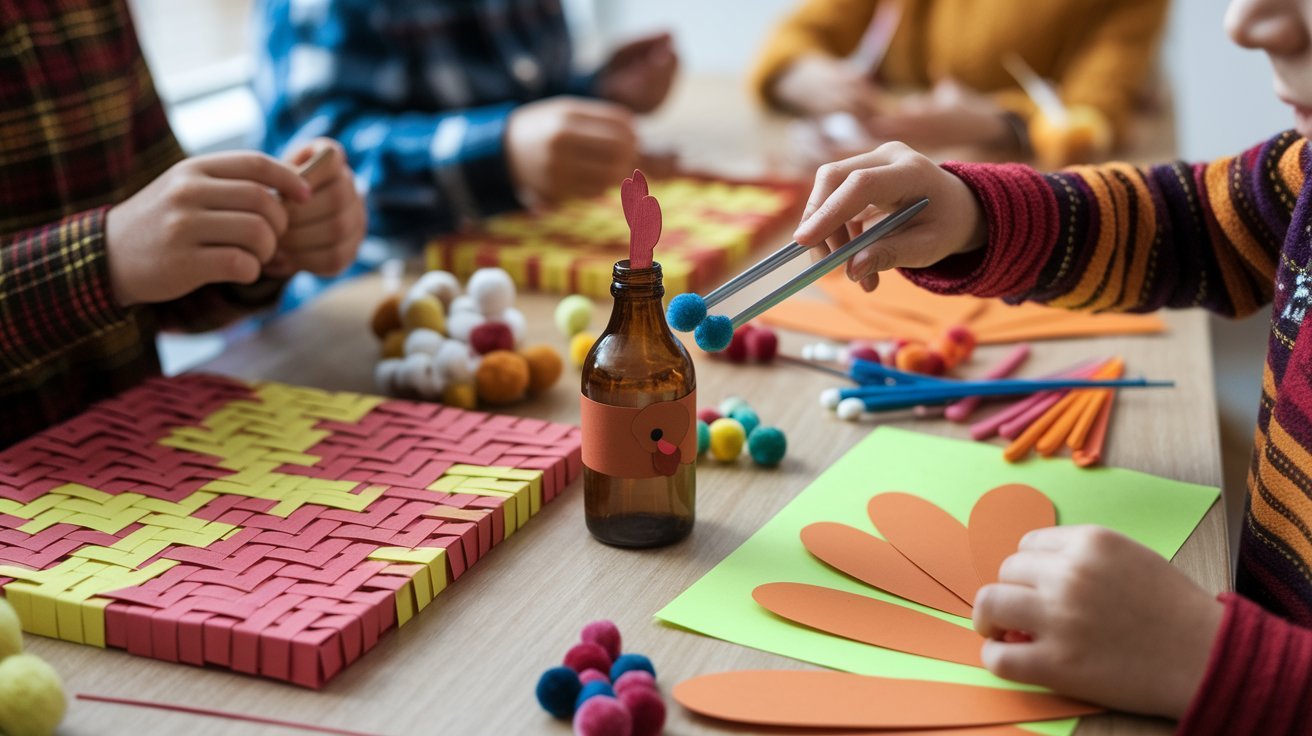
These three projects combine multiple fine motor skills in festive formats. The Woven Placemat teaches basic weaving using strips of construction paper in fall colors. Children create functional placemats for your Thanksgiving table while practicing over-under patterns.
Turkey Feather Painting uses cotton swabs as mini paintbrushes for detail work. The Turkey Treats Bottle transforms an empty water bottle into a turkey shape, and children use tongs to “feed” the turkey pom poms or small manipulatives through the opening.
These activities take slightly longer but create something that children feel proud to display. The weaving especially strengthens the same hand movements used in tying shoes. Parents tell me their children ask to repeat these projects year after year.
What You’ll Find in This Guide
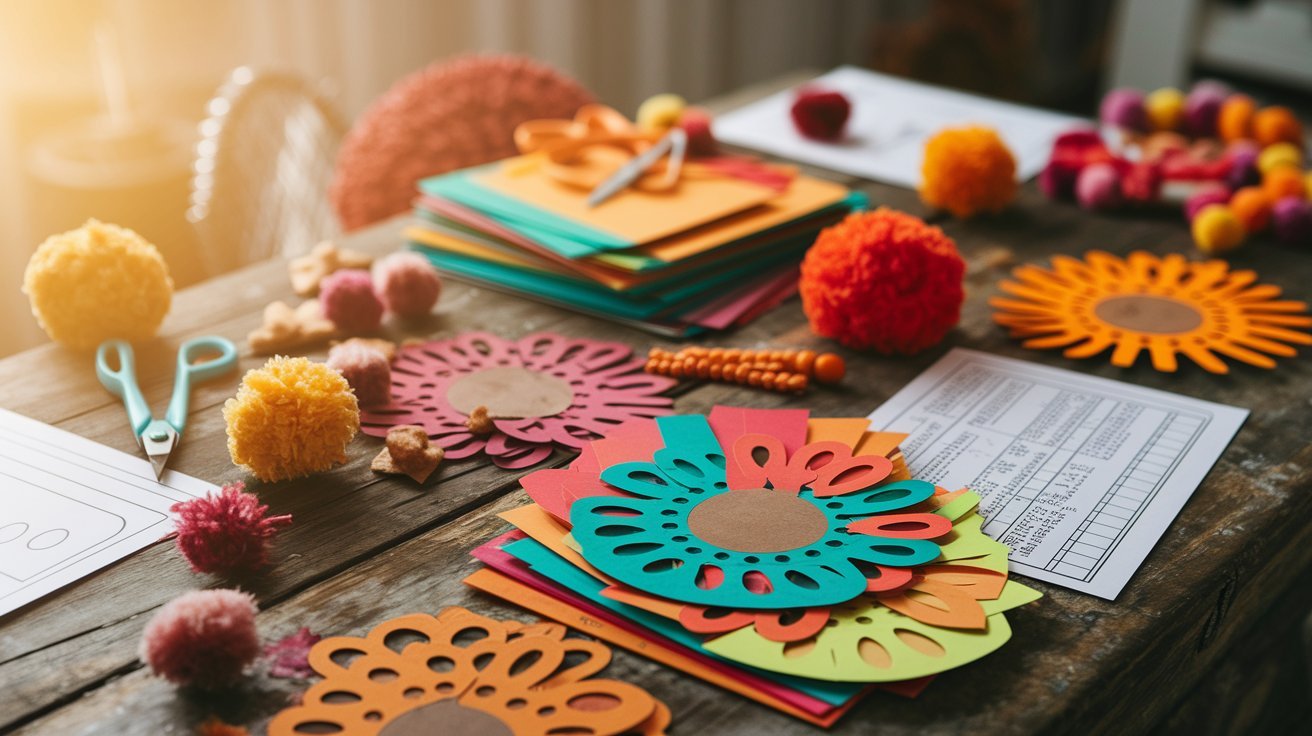
I’ve organized these Thanksgiving fine motor activities by skill progression and material requirements. You’ll find activities suitable for children ages 2 through 8, each with clear instructions and setup tips.
Free printable templates accompany several activities, available through a simple download. Each activity includes adaptations for different age groupsways to simplify for toddlers, or add challenges for older children who need more complexity.
Extension ideas help you get multiple uses from each activity. The turkey hole punch cards, for example, can become counting practice or pattern recognition exercises. These versatile activities support learning across multiple developmental areas.
Building Hand Strength with Thanksgiving Themes
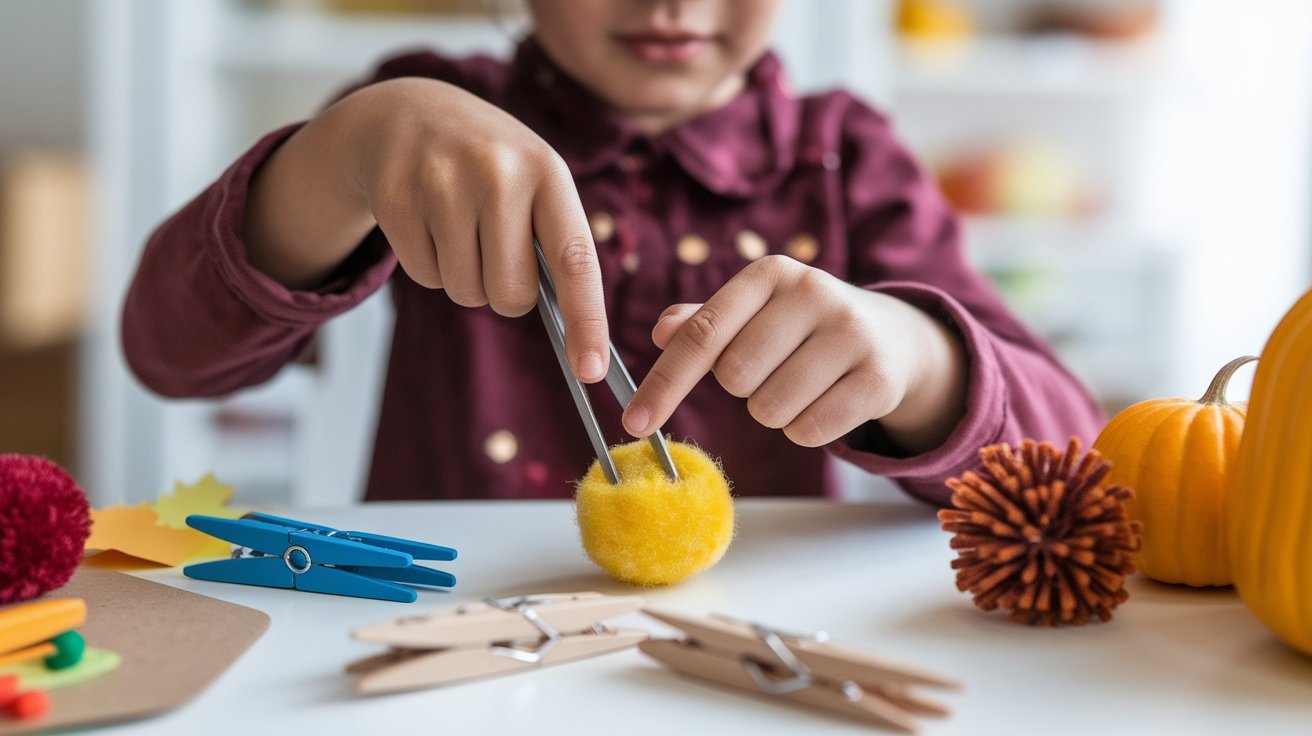
Hand strength forms the foundation for everything from writing to buttoning shirts. The clothespin activities in this collection specifically target the muscles children need for functional tasks. When children clip clothespins repeatedly, they build endurance without realizing they’re exercising.
Tong activities offer adjustable resistance training for small hands. Kitchen tongs provide more challenge than craft tweezers. I suggest starting easier and gradually increasing difficulty as children’s grip strength improves.
The pinching, squeezing, and grasping motions in these activities prepare children for holding pencils correctly. Parents often notice improved writing control after consistent fine motor practice during holiday weeks.
Developing Bilateral Coordination Skills
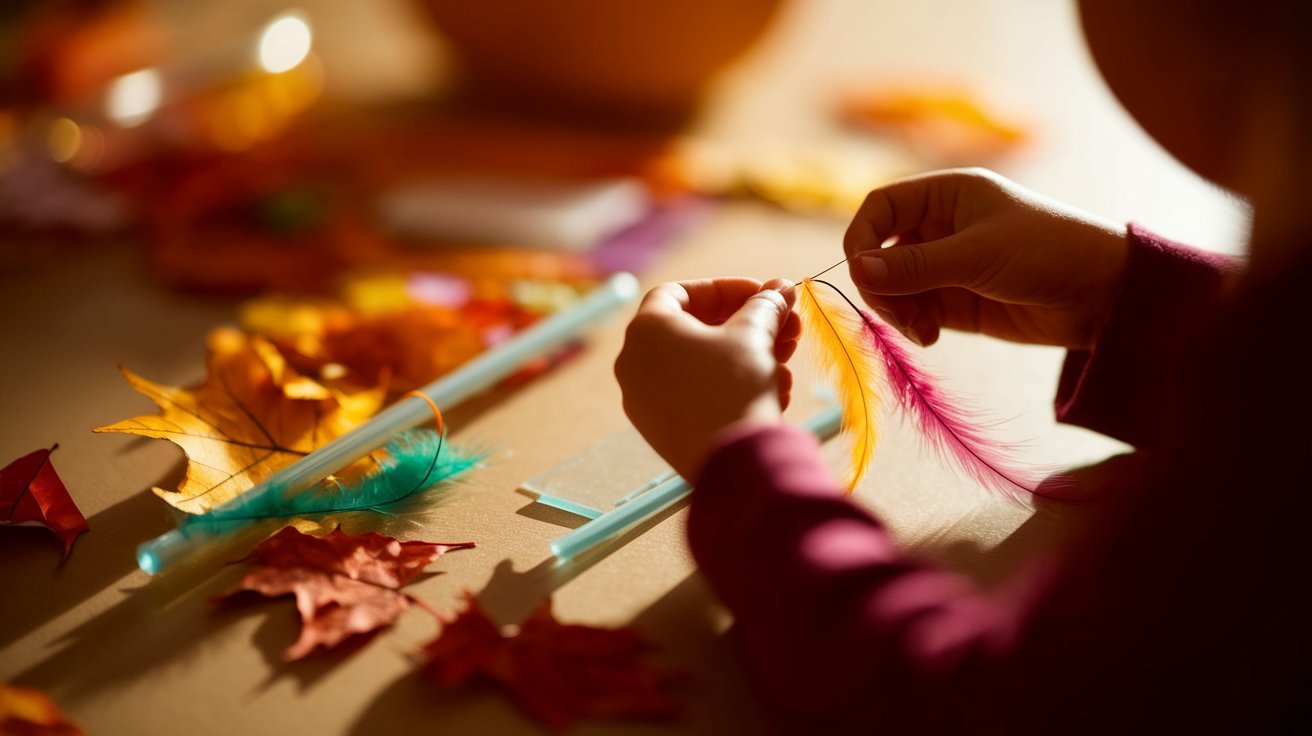
Bilateral coordination means using both hands together effectively. Many Thanksgiving fine motor activities in this guide require one hand to hold while the other manipulates. The threading activities exemplify this: one hand stabilizes the tube while the other guides the feather through.
Cutting activities demand sophisticated bilateral coordination. One hand turns the paper while the scissors cut, a complex skill that takes considerable practice to master. The Turkey in the Grass activity breaks this down into manageable steps.
Watch children’s non-dominant hand during activities. It should actively help rather than sit idle. Gentle reminders to use both hands build this essential coordination naturally through play.
Precision and Control Development
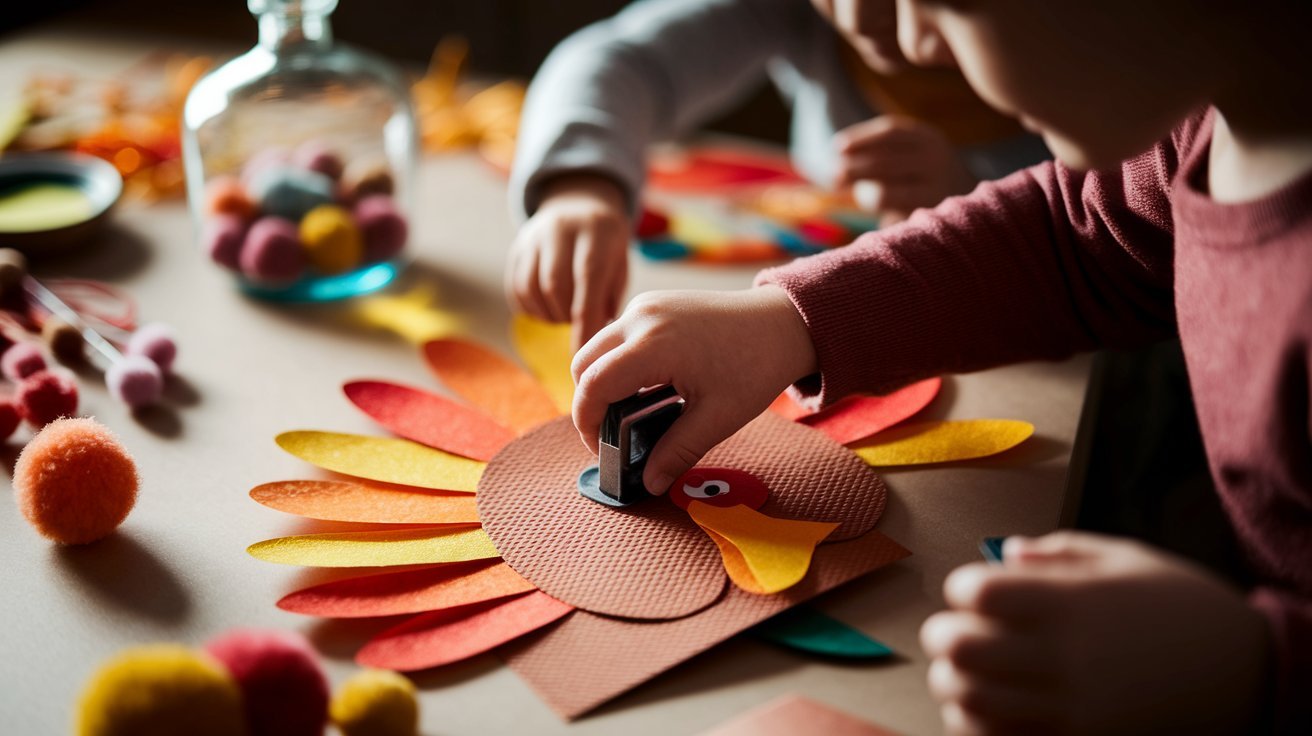
The hole punch activities build precision in small movements. Children must position the punch accurately over marked spots on the turkey cards. This controlled placement transfers directly to academic tasks like connecting dots or forming letters within lines.
Painting with cotton swabs requires steadier control than using large brushes. Children naturally slow down and focus on detailed work. The concentration visible on their faces during these activities shows genuine cognitive engagement.
Feeding the turkey bottle combines precision with hand-eye coordination. Getting pom poms through the opening takes practice and teaches children to adjust their approach based on results. This problem-solving builds both motor skills and critical thinking.
Sensory Integration Through Holiday Crafts
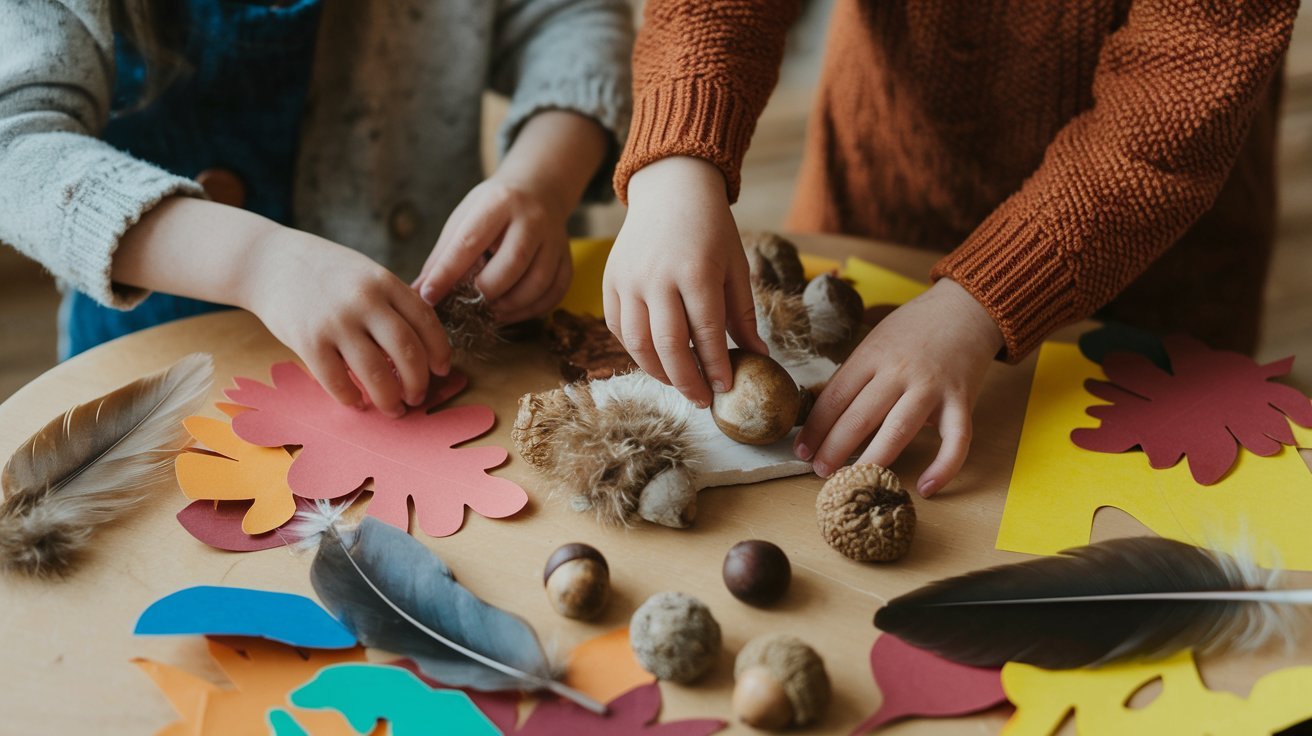
These activities incorporate varied textures and materials for sensory input. Feathers provide soft tactile feedback, while acorns offer smooth, hard surfaces. This sensory variety helps children process different touch experiences while working.
The pom poms used in several activities come in different sizes, adding another sensory dimension. Small pom poms require more precision than large ones, naturally creating graduated challenges within single activities.
Seasonal colors and themes make the sensory experience more memorable. Children form positive associations with skill practice when activities feel festive and special rather than purely educational.
Concentration and Focus Building
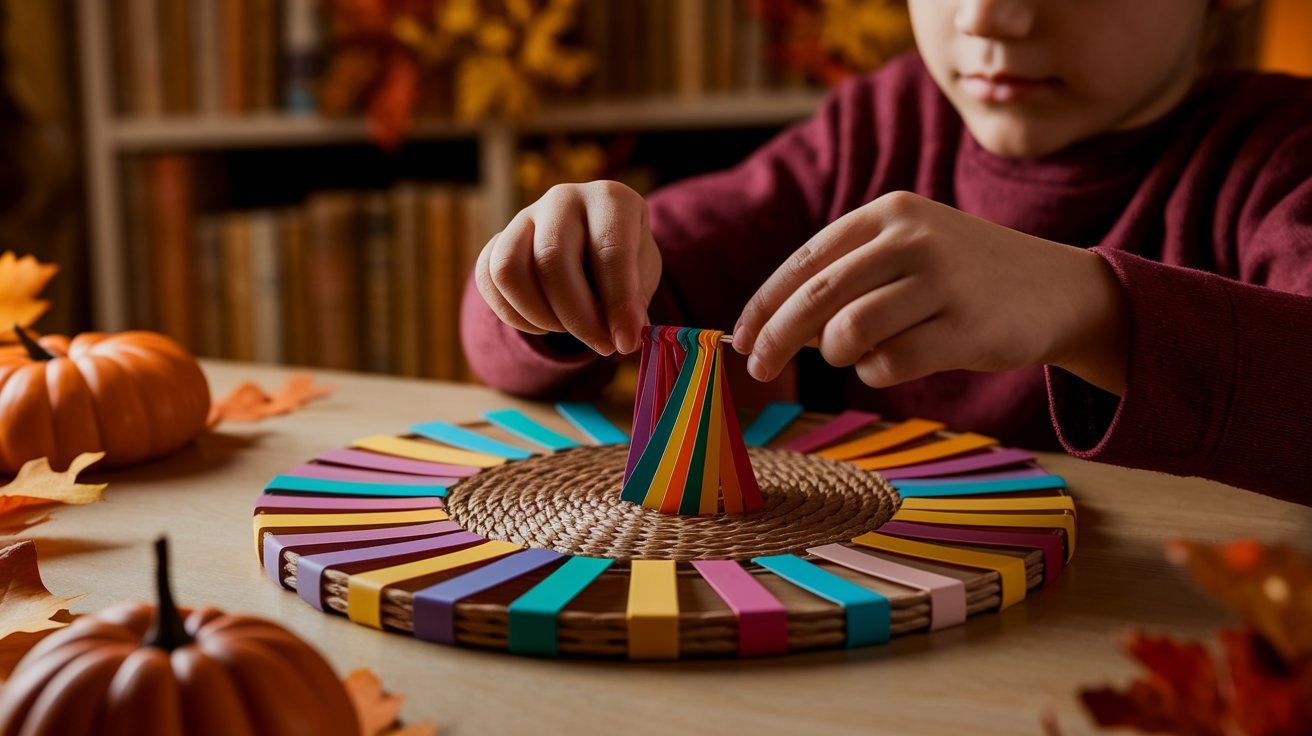
Fine motor tasks naturally require sustained attention. The Woven Placemat project demands focus for completion. Children must maintain the over-under pattern throughout. This extended concentration period builds stamina for longer academic tasks.
Success in these activities teaches children that focused effort produces results. When they complete a complex cut-and-paste project, they experience genuine achievement. This builds confidence for tackling other challenging tasks.
I encourage parents to let children work uninterrupted when deeply engaged. These flow states indicate optimal learning. The Thanksgiving theme helps maintain interest longer than abstract skill drills would.
Social Skills Through Shared Activities
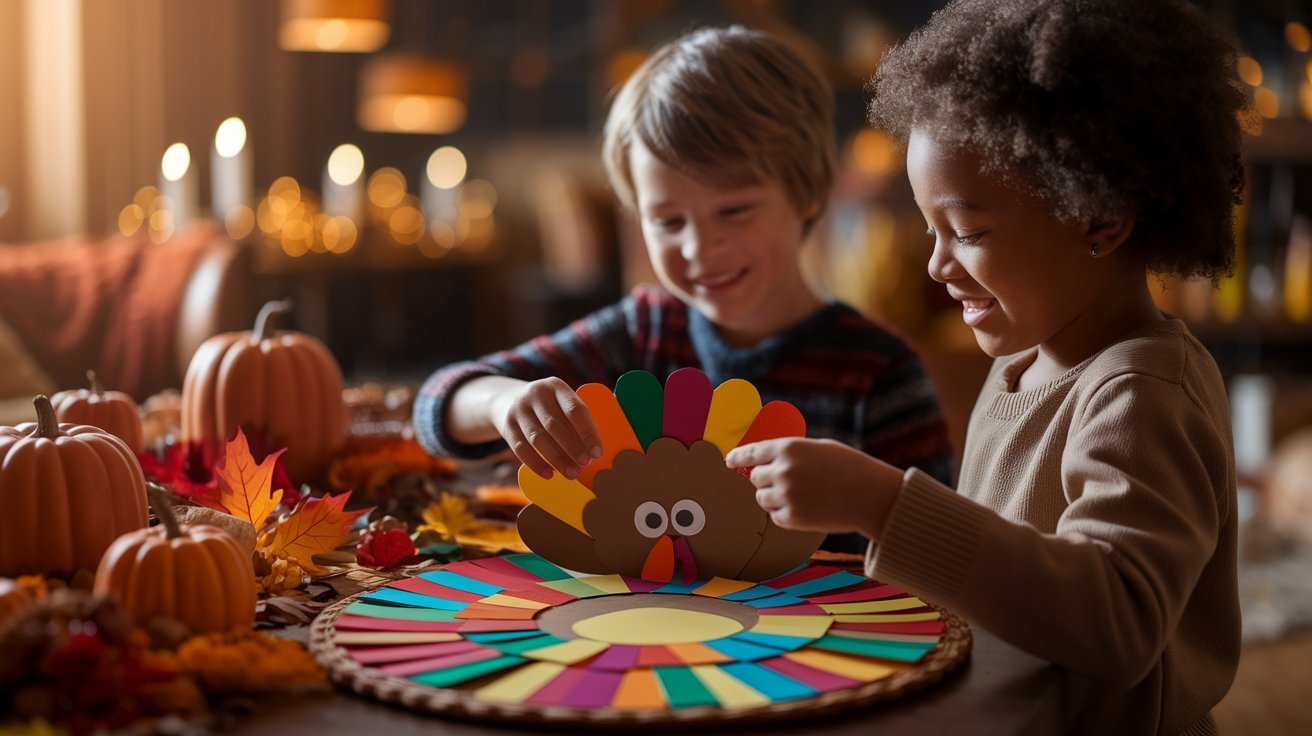
Many of these Thanksgiving fine motor activities work beautifully as group projects. Siblings can create competing turkey designs or collaborate on a family placemat. This social dimension adds communication practice to motor skill development.
Children learn patience waiting for shared materials like the hole punch. They practice asking politely and taking turns. These soft skills matter as much as motor development for school readiness.
Family activity time during Thanksgiving week creates lasting memories. Years later, children remember making turkey crafts with parents, not that they were building pre-writing skills. This emotional connection makes learning stick.
Independence and Self-Help Skills
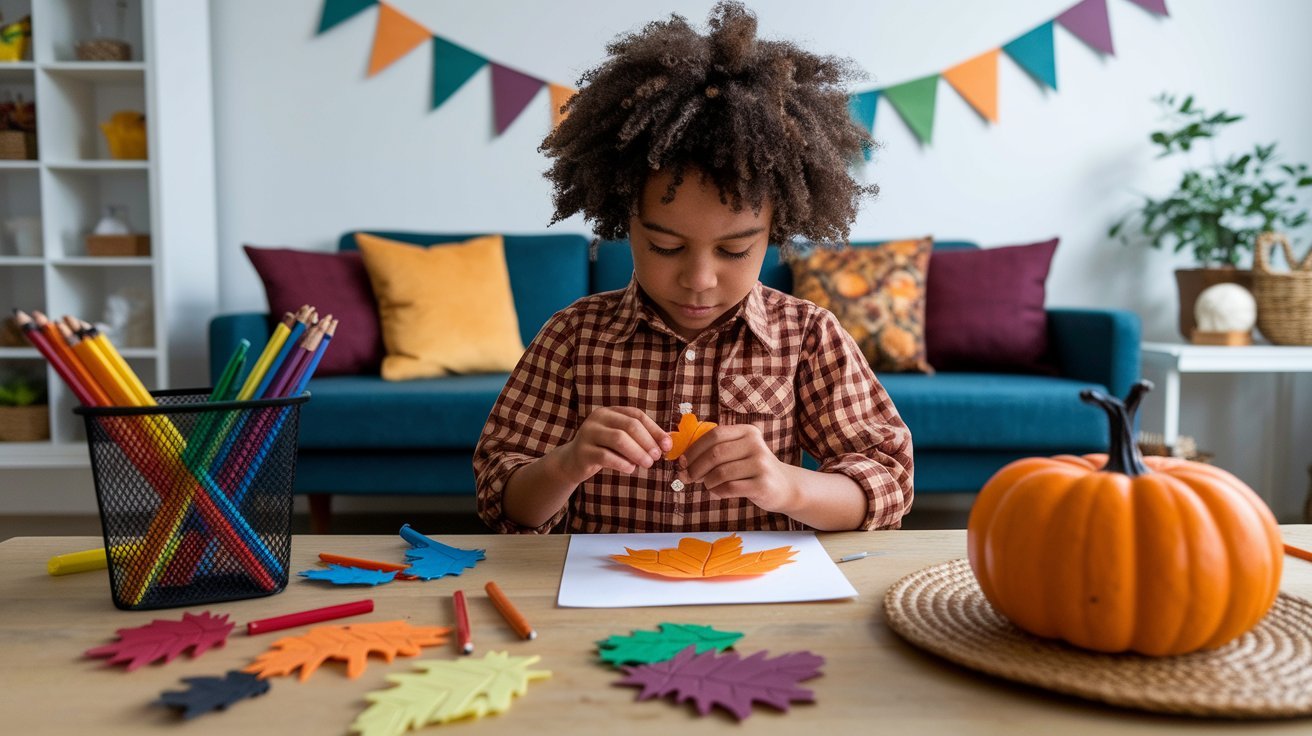
These activities promote independence through manageable challenges. Children can complete most tasks without adult assistance after an initial demonstration. This autonomy builds confidence and shows them they’re capable of more than they thought.
The same fine motor skills used in crafts transfer to self-care tasks. Stronger hands button coats more easily. Better bilateral coordination makes tying shoes less frustrating. The practical benefits extend far beyond craft time.
Setting up activity stations where children can work independently teaches valuable life skills. They learn to gather materials, follow multi-step directions, and clean up afterward. These executive function skills support success in all areas of life.
Progress Tracking and Skill Milestones
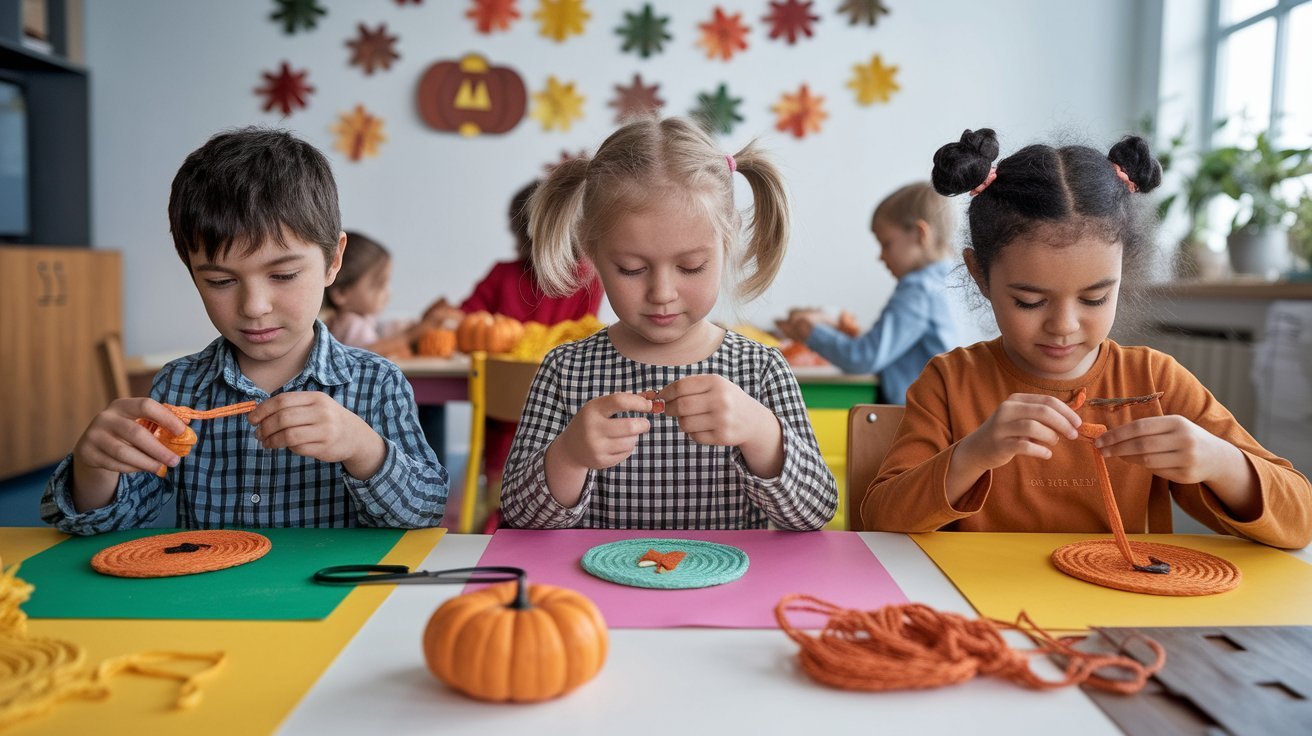
Watch for improvement markers as children practice these activities. Initially awkward scissor holds become more efficient. Tong transfers that took concentrated effort become quick and confident. These visible progressions motivate continued practice.
Save early projects to compare with later work. Children love seeing their own improvement. This concrete evidence of growth reinforces that practice matters and skills develop over time with effort.
Some children progress quickly while others need more repetition. Both patterns are normal. The key is regular practice in enjoyable formats that keep children engaged rather than frustrated.
Age-Appropriate Activity Selection
Matching Thanksgiving fine motor activities to your child’s developmental stage ensures success and maintains motivation.
Activities for Toddlers (Ages 2-3)
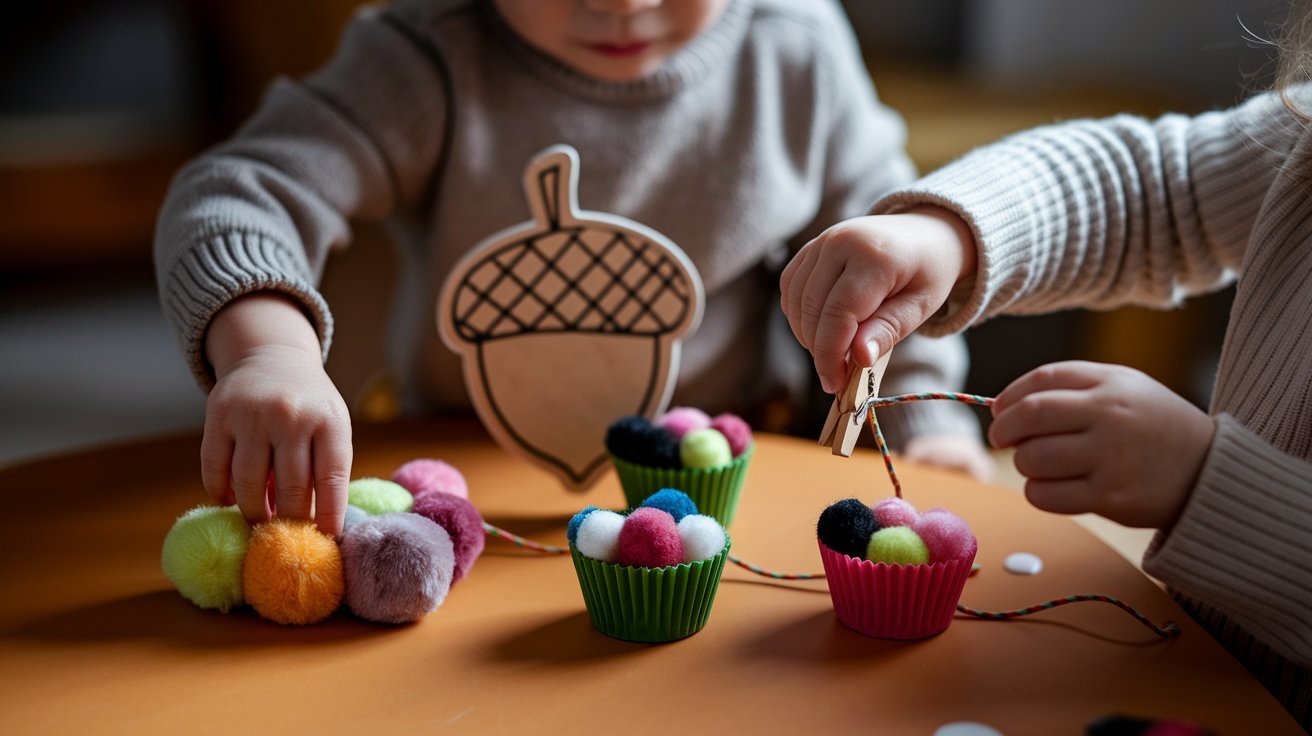
Toddlers need larger items they can grasp confidently without frustration. The Acorn Drop activity works better with large pom poms than tiny acorns for this age. One-step tasks match their attention spans and ability to follow directions.
Color sorting naturally integrates into transfer activities. Toddlers sort orange pom poms into one muffin cup and yellow into another, adding cognitive benefits to motor practice. This simple addition keeps them engaged longer.
Success matters enormously at this age. Design activities where completion is guaranteed rather than skill-dependent. Every toddler can clip at least one clothespin to the line, creating the positive experience that encourages continued practice.
Activities for Preschoolers (Ages 4-5)
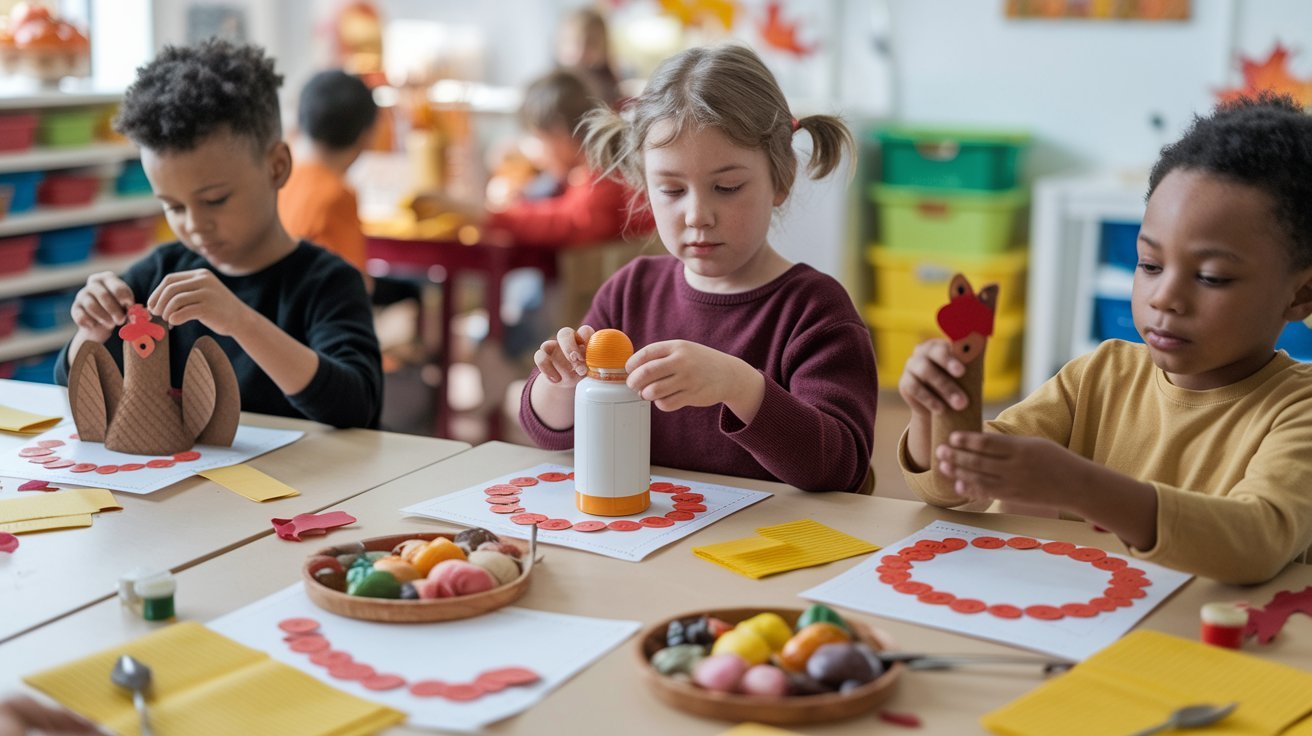
Preschoolers handle multi-step projects like the Set the Table Craft that combine cutting, pasting, and arranging. Their improved attention spans and following directions allow for more complex Thanksgiving fine motor activities.
Cutting practice becomes central at this age as children prepare for kindergarten. The graduated difficulty in the Thanksgiving Puzzles lets children start with simple 2-piece designs and progress to 5-piece challenges as skills improve.
Pattern-making adds cognitive challenge to motor practice. Turkey Hole Punch Cards become pattern exercises red, orange, red, orange. Counting integration happens naturally when children feed 10 items to the turkey bottle.
Activities for Early Elementary (Ages 6+)
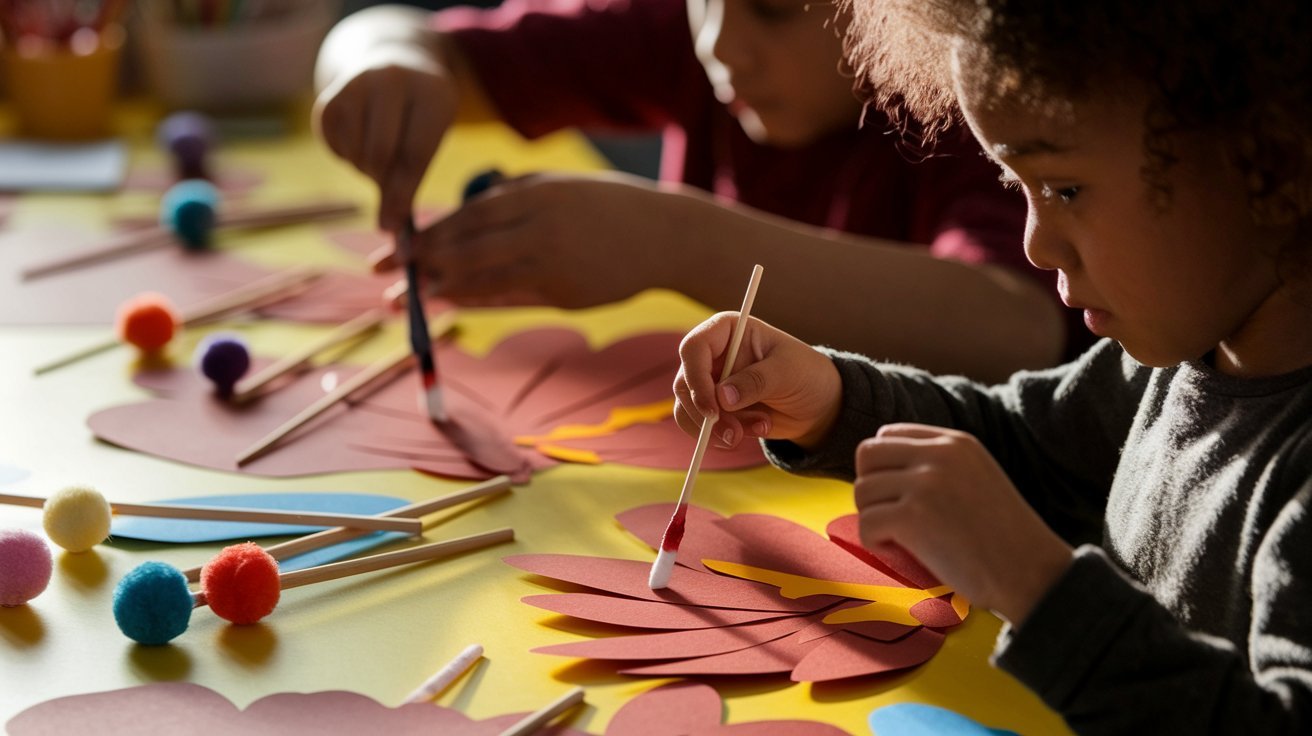
First and second graders can cut complex shapes with curves and interior cuts. The detailed food items in the table craft provide appropriate challenges. They’re ready for the precision required in cotton swab painting.
Chopstick challenges replace tongs for children who’ve mastered easier tools. Moving pom poms with chopsticks demands significant coordination and concentration. Some children love this challenge, while others still need tongue practice; both are fine.
Independent project completion becomes realistic at this age. You can set up an activity station and let children work through the entire process themselves, from reading instructions to cleanup.
Conclusion
Starting Thanksgiving, fine motor activities this week combine holiday fun with valuable skill practice for your children. First, choose from 2-3 projects that match your child’s age and interests. Next, collect items from your current stock.
Free printables that are mentioned in the guide provide the templates that eliminate prep time. Watch your child engage as well as set up just one activity station for today, perhaps the acorn transfer or the clothespin turkey.
Classroom tasks, self-care, and writing benefit through these activities’ coordination, focus, and hand strength. The theme that is seasonal lets people celebrate instead of working. Your children develop important skills during their youth. Thanksgiving memories are also created by them.
Frequently Asked Questions
At what age is best for Thanksgiving fine motor activities?
Children ages 2-8 benefit from fine motor practice, with activities adjusted for developmental stages. Toddlers need larger materials and simpler tasks, while elementary students handle complex projects.
How long should fine motor practice sessions last?
Sessions of 10-20 minutes work best for most children. Toddlers may focus for only 5-10 minutes, while older children engage for 30 minutes on interesting projects. Follow your child’s le, and stop when frustration appears and celebrate successes to maintain positive associations with skill practice.
Can these activities help with handwriting preparation?
Yes, the pinching, gripping, and bilateral coordination developed through these Thanksgiving fine motor activities directly support handwriting readiness. Hand strength from clothespin work and scissor control from cutting practice build the exact muscles children need for comfortable, legible writing in school.
What if my child gets frustrated during activities?
Frustration signals that the activity is too difficult for their current skill level. Switch to simpler versions, larger materials, easier tools, or one-step tasks. Build confidence with guaranteed successes before gradually increasing the challenge.
How often should we practice fine motor skills?
Daily practice in short sessions produces better results than occasional long sessions. Incorporate 10-15 minutes of fine motor work into your routine several times weekly. Thanksgiving provides natural motivation.
